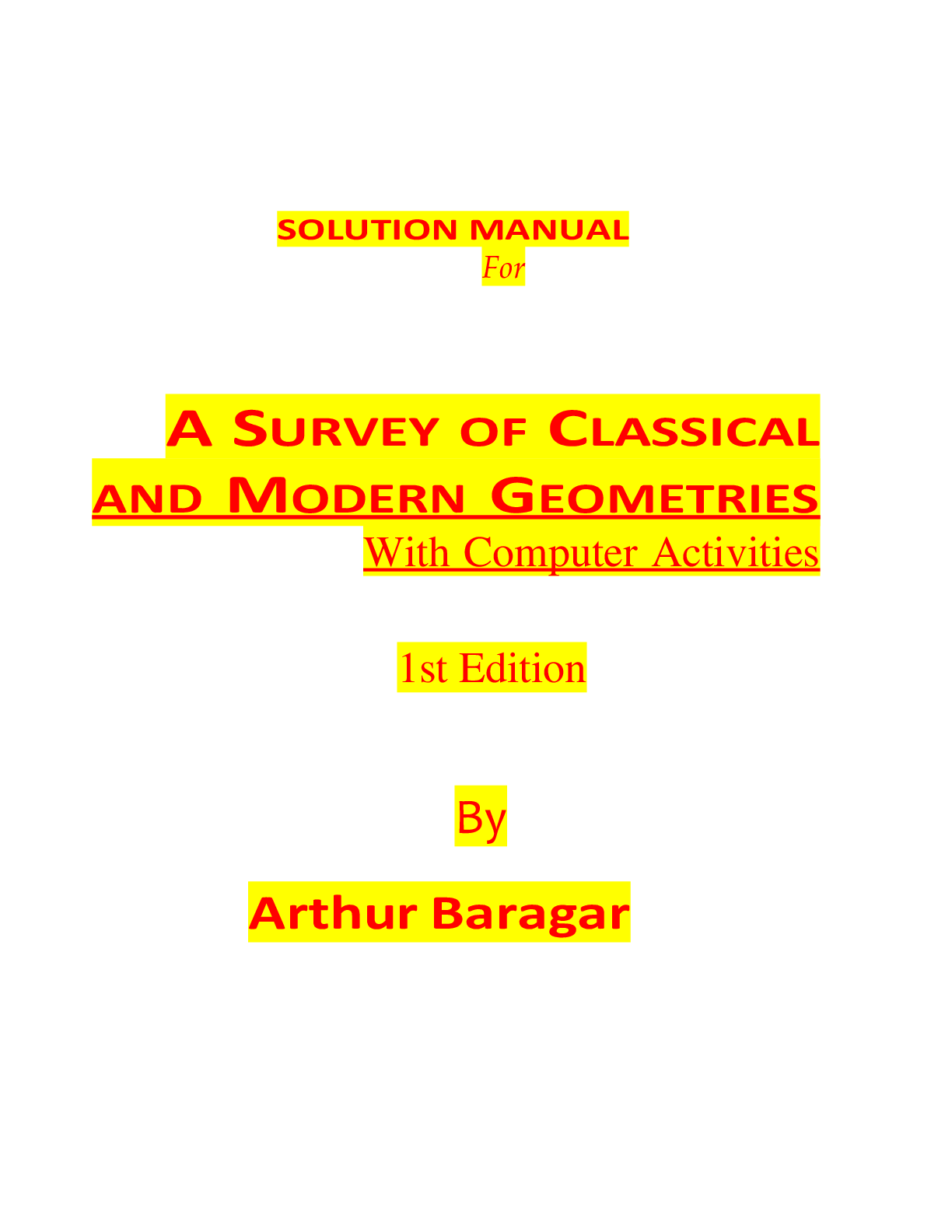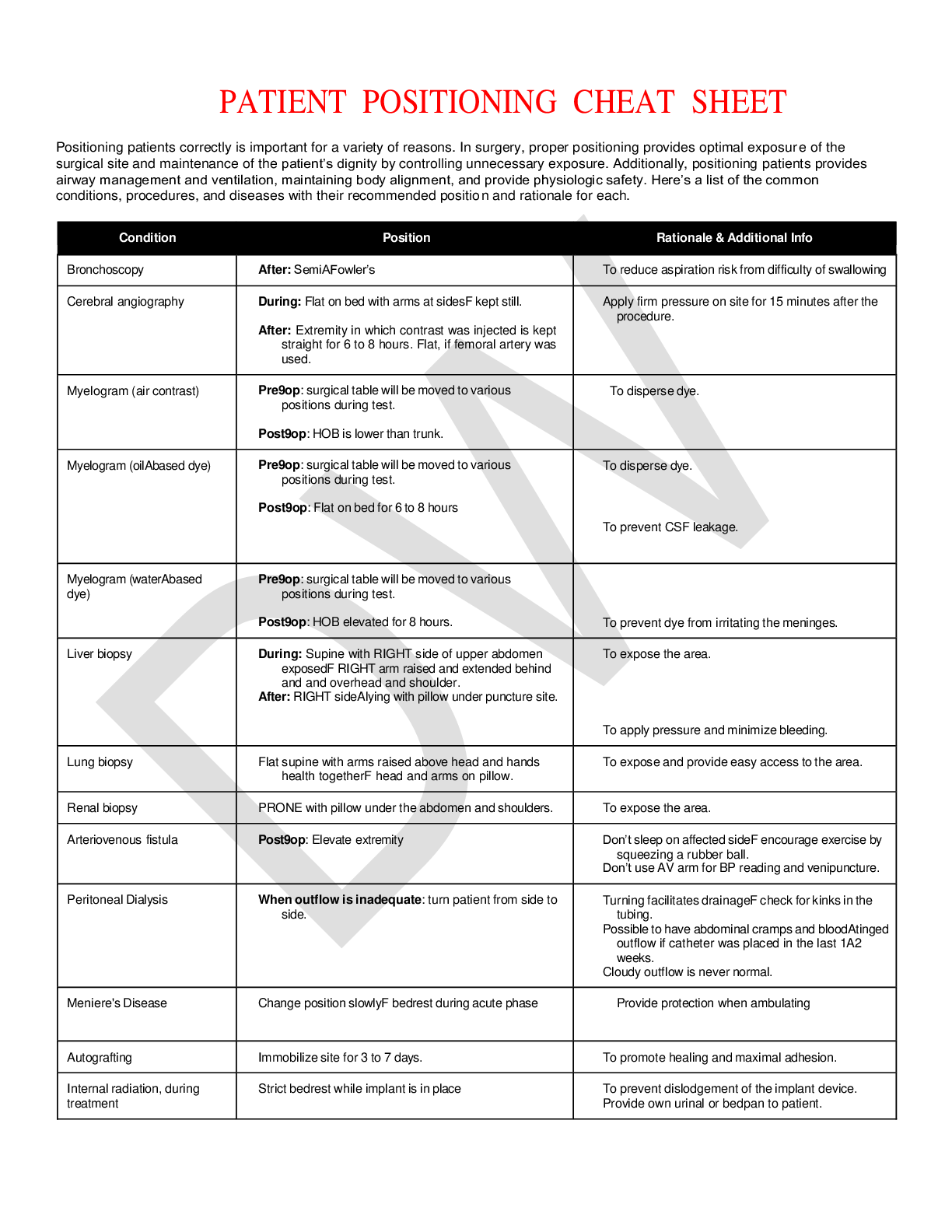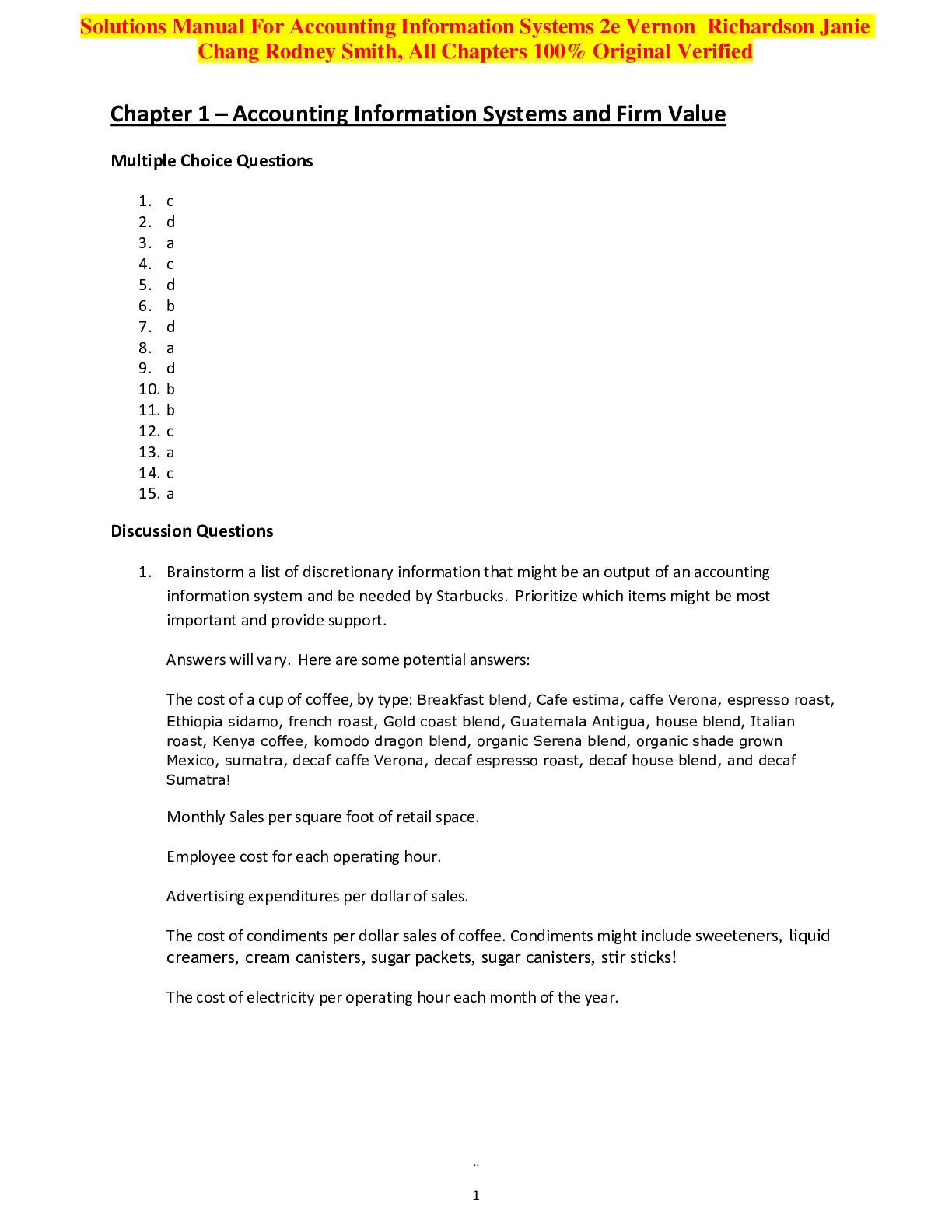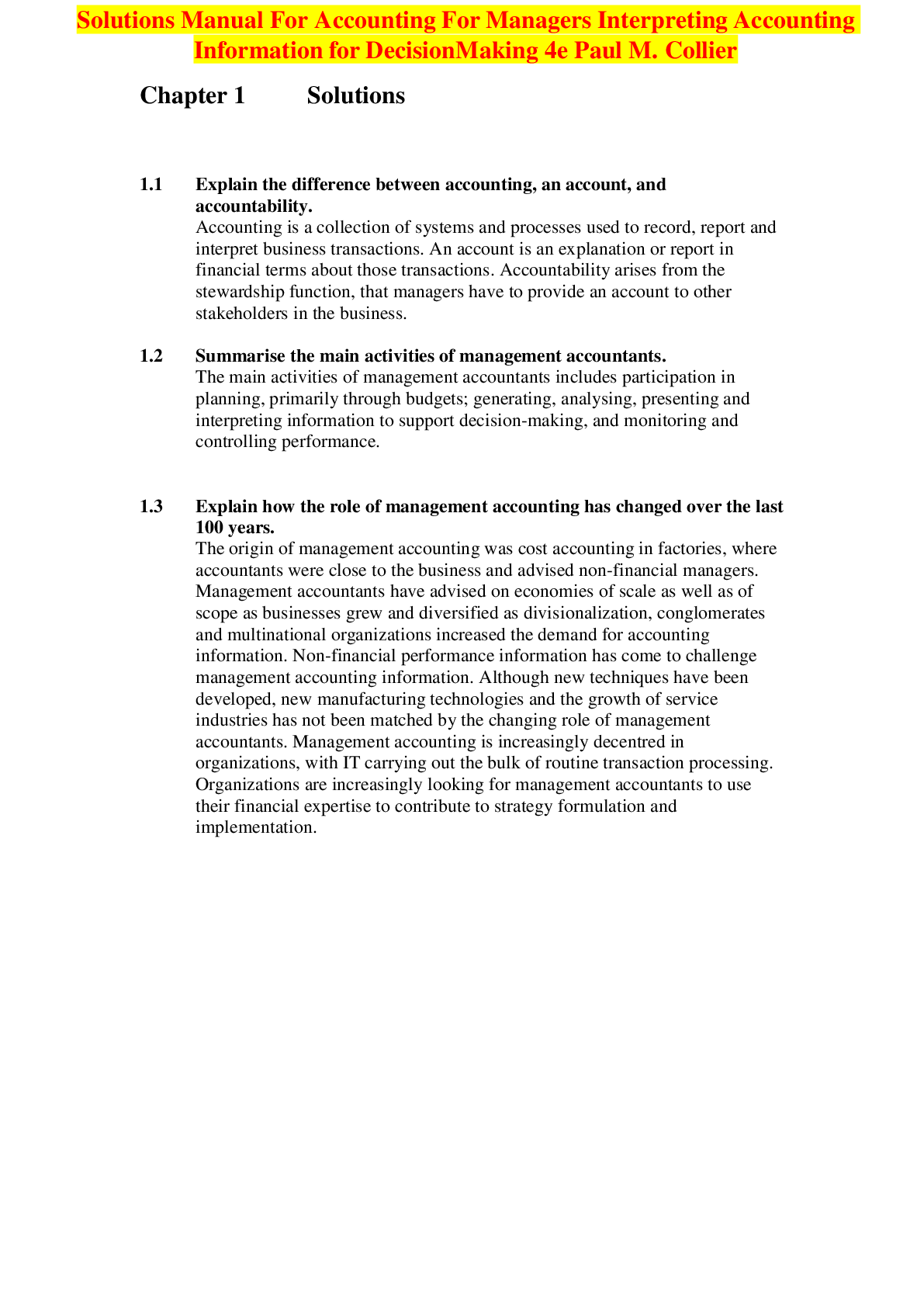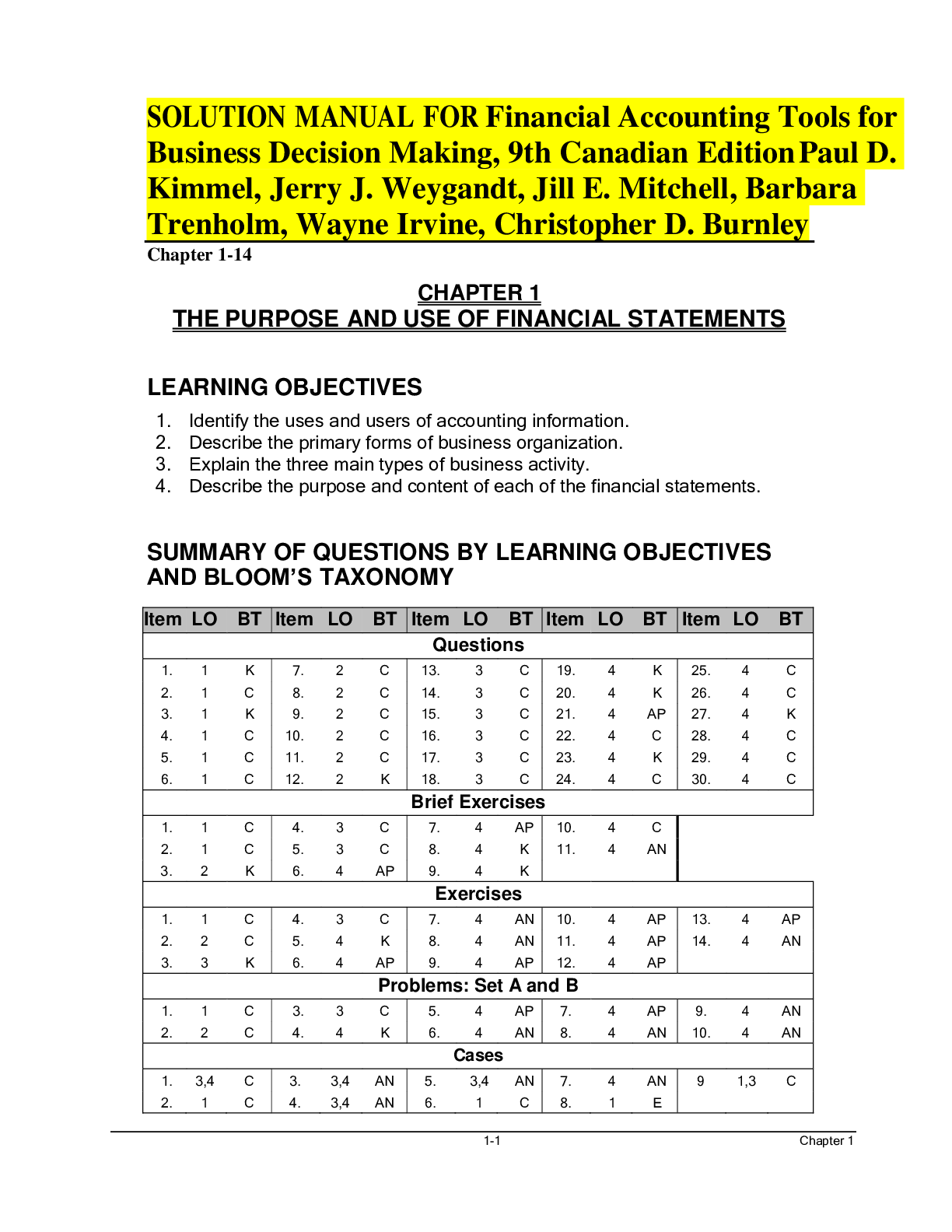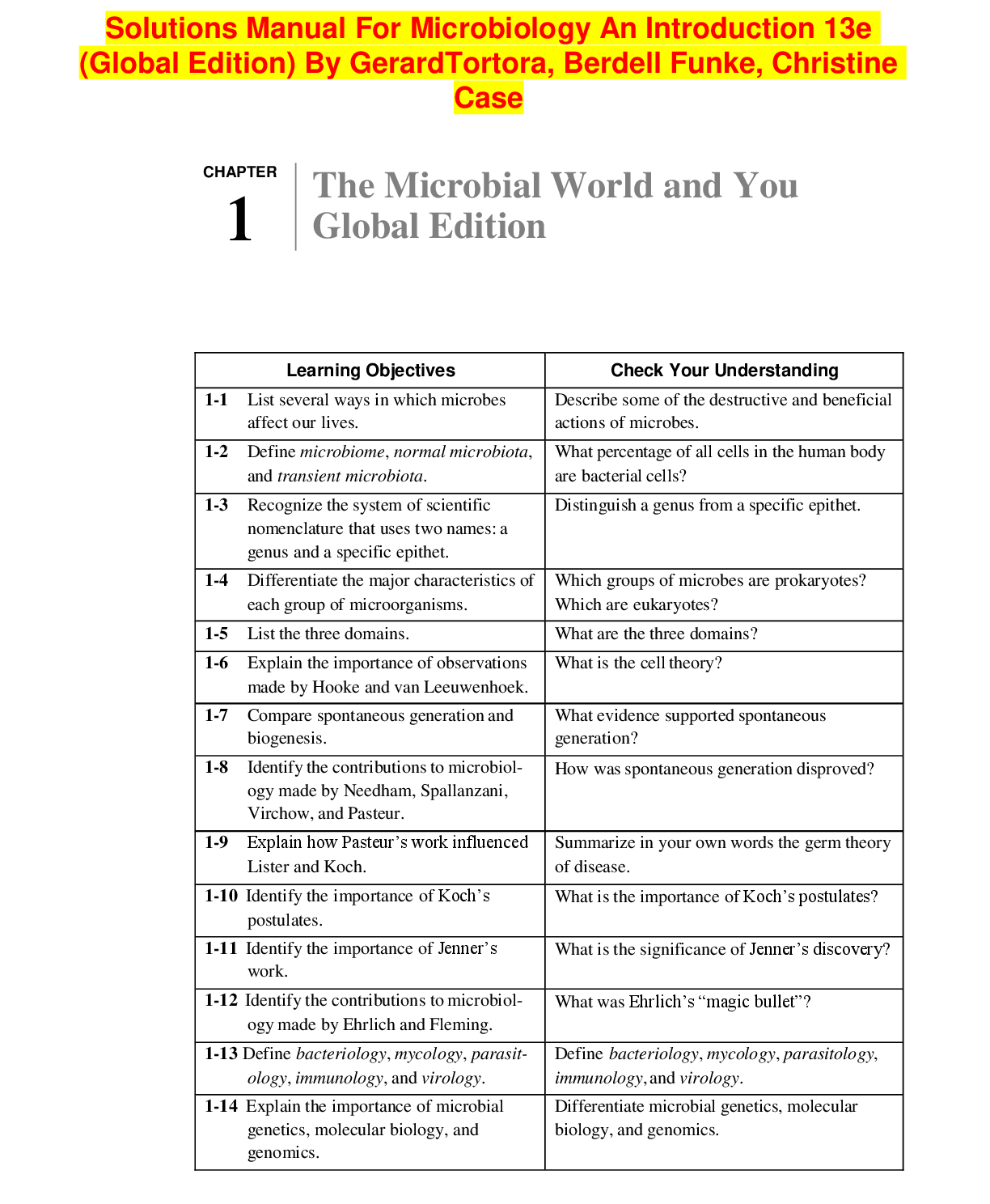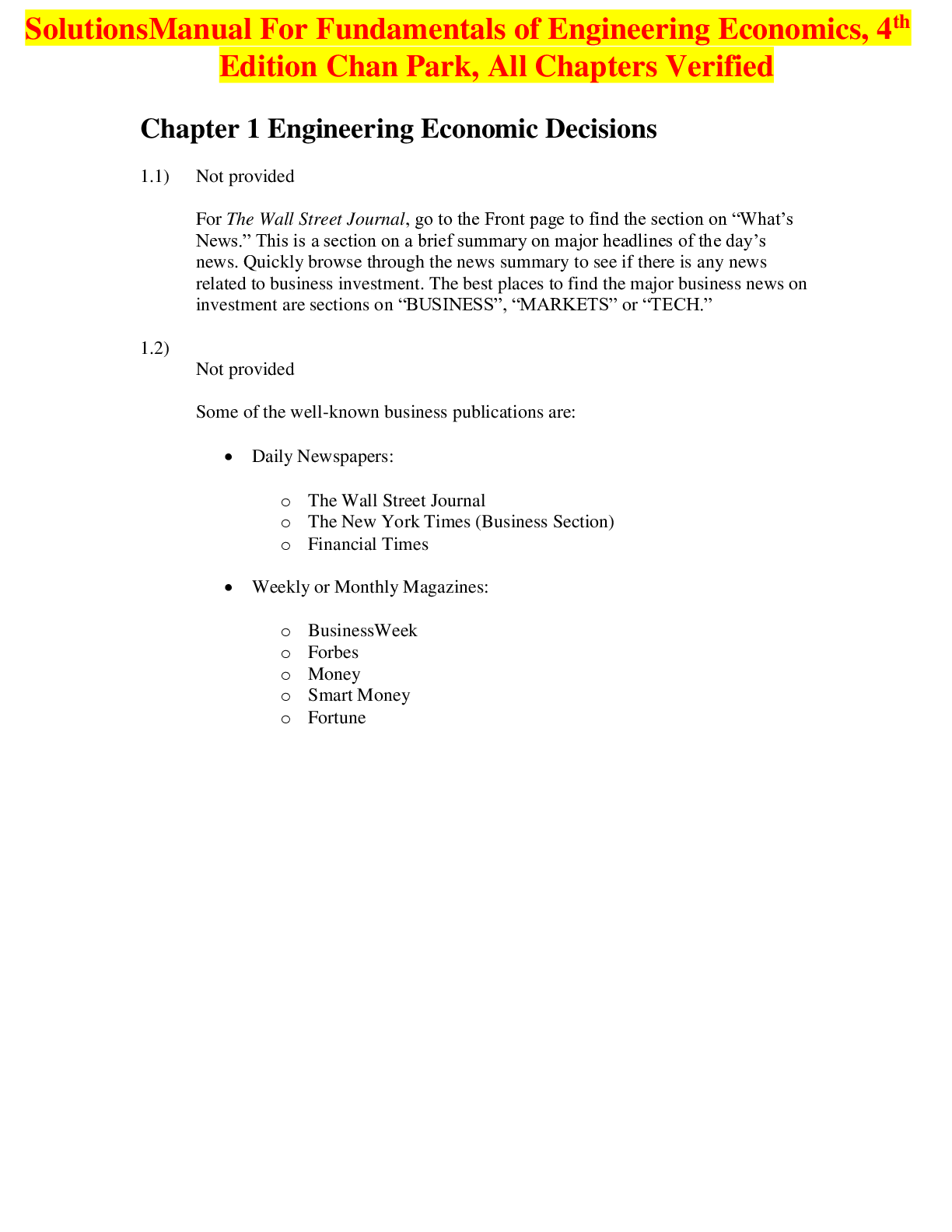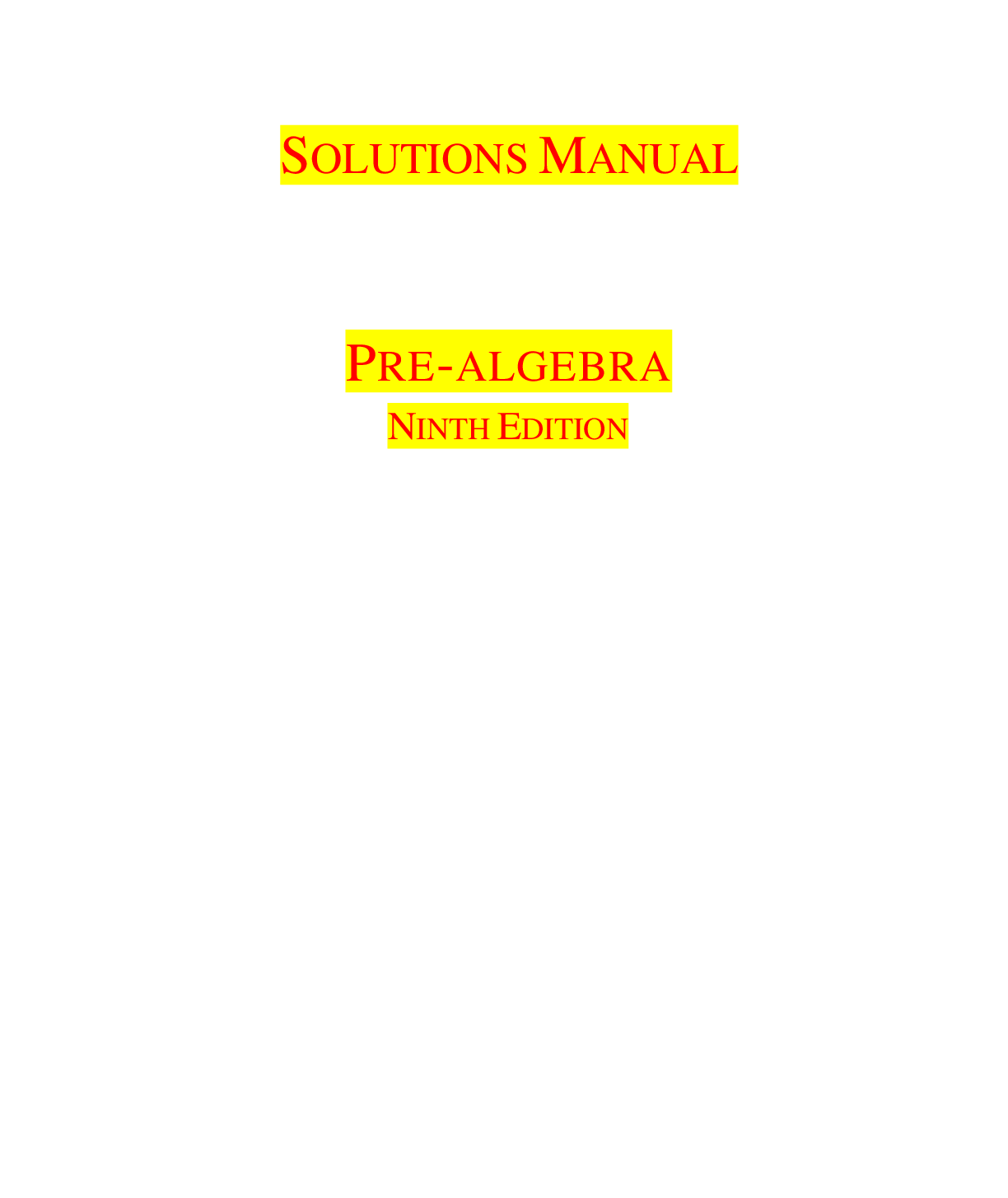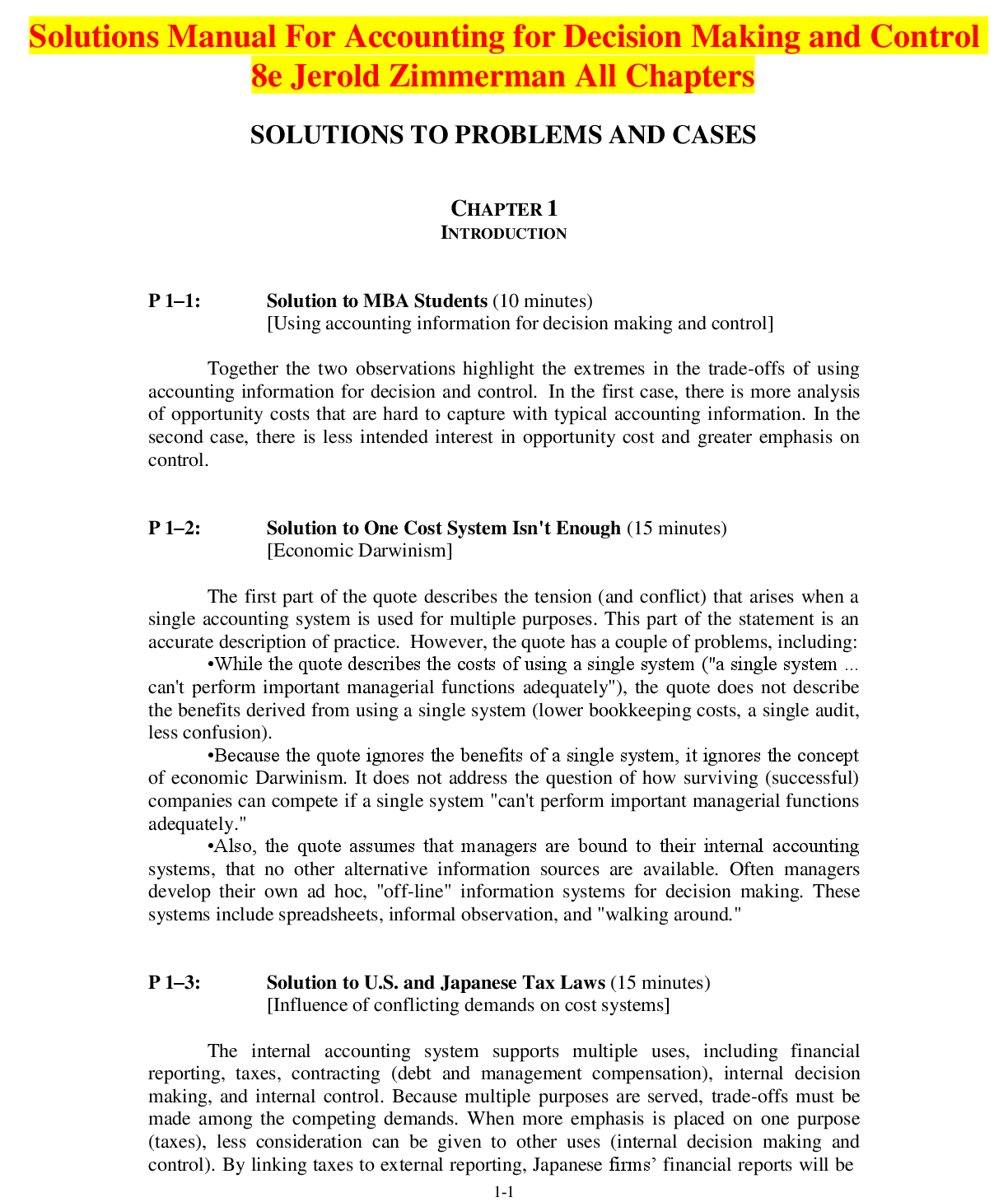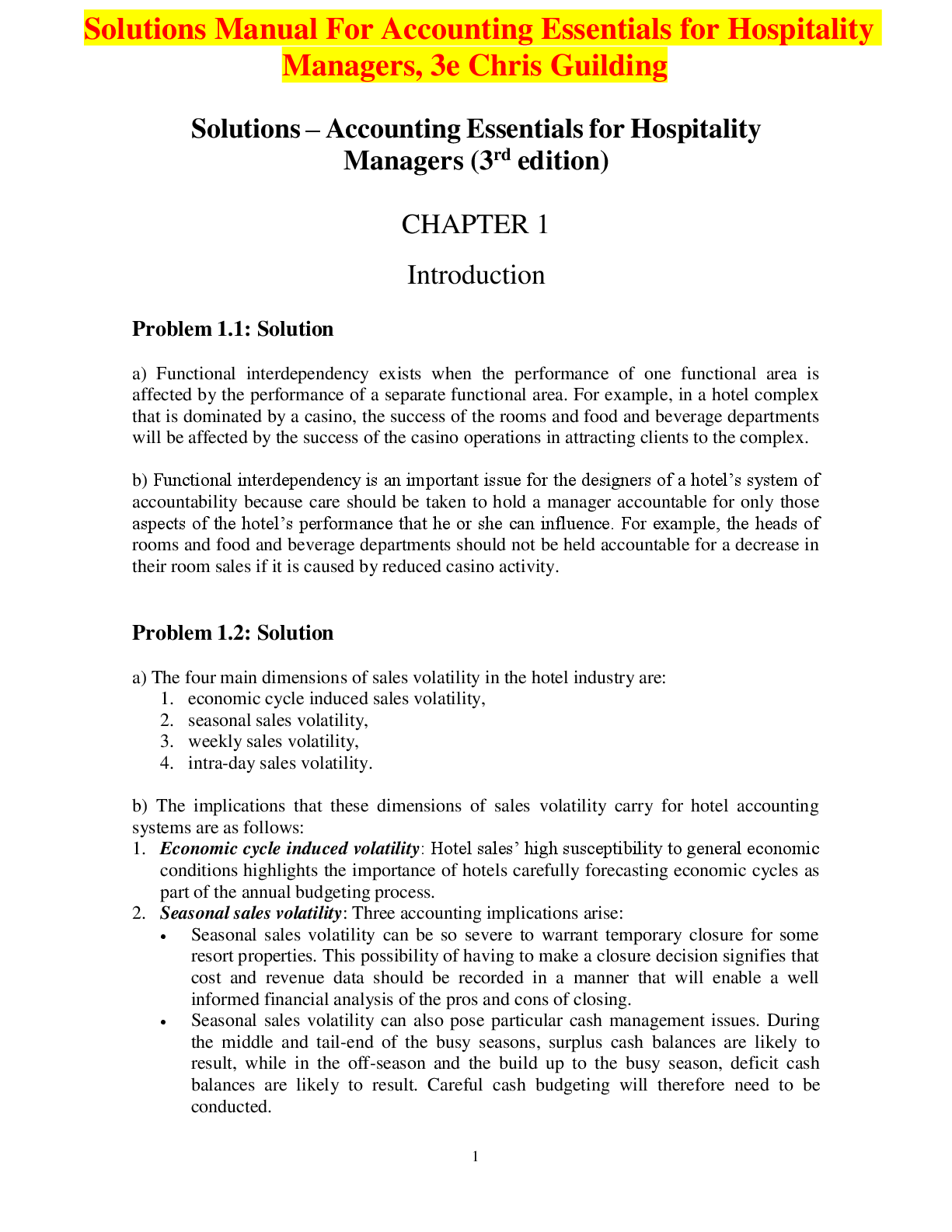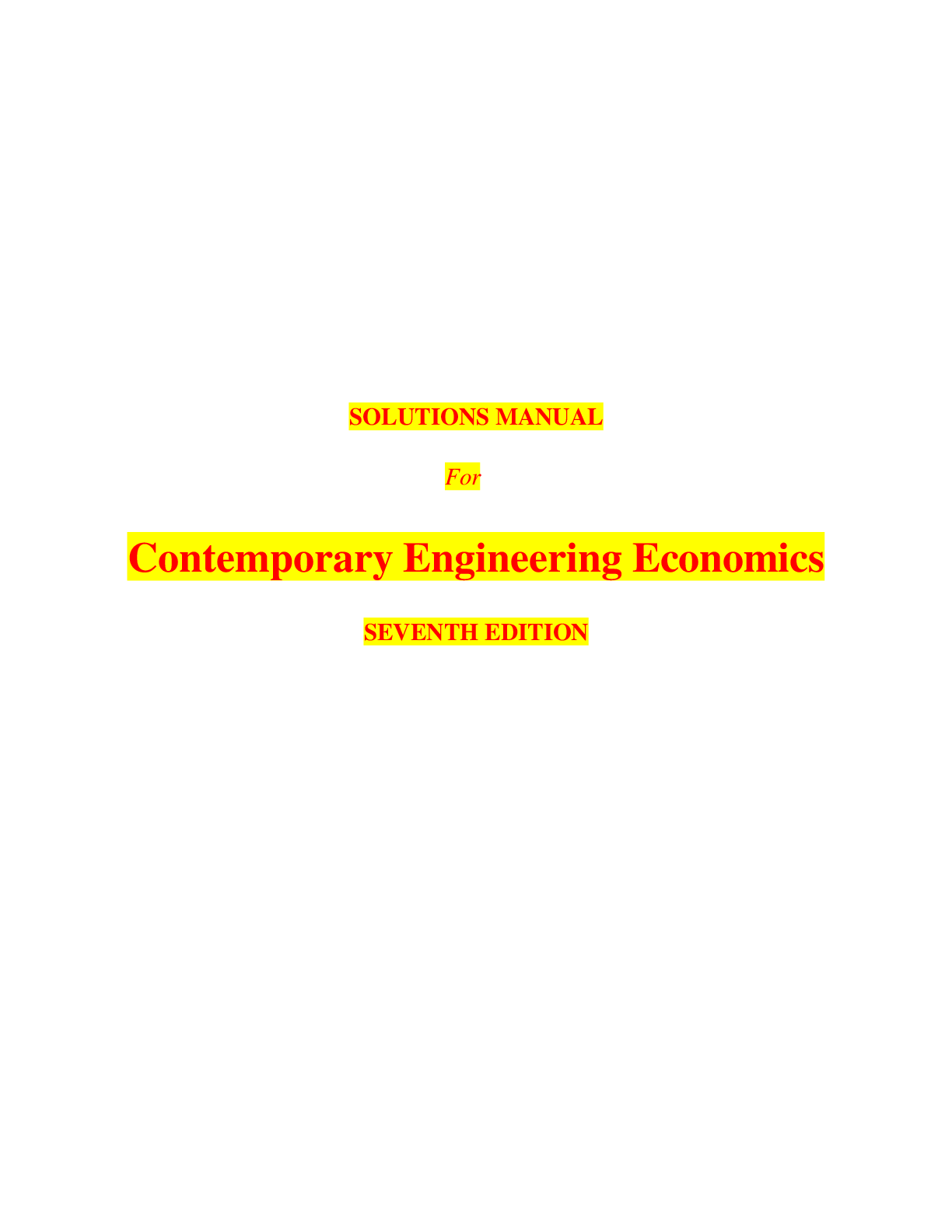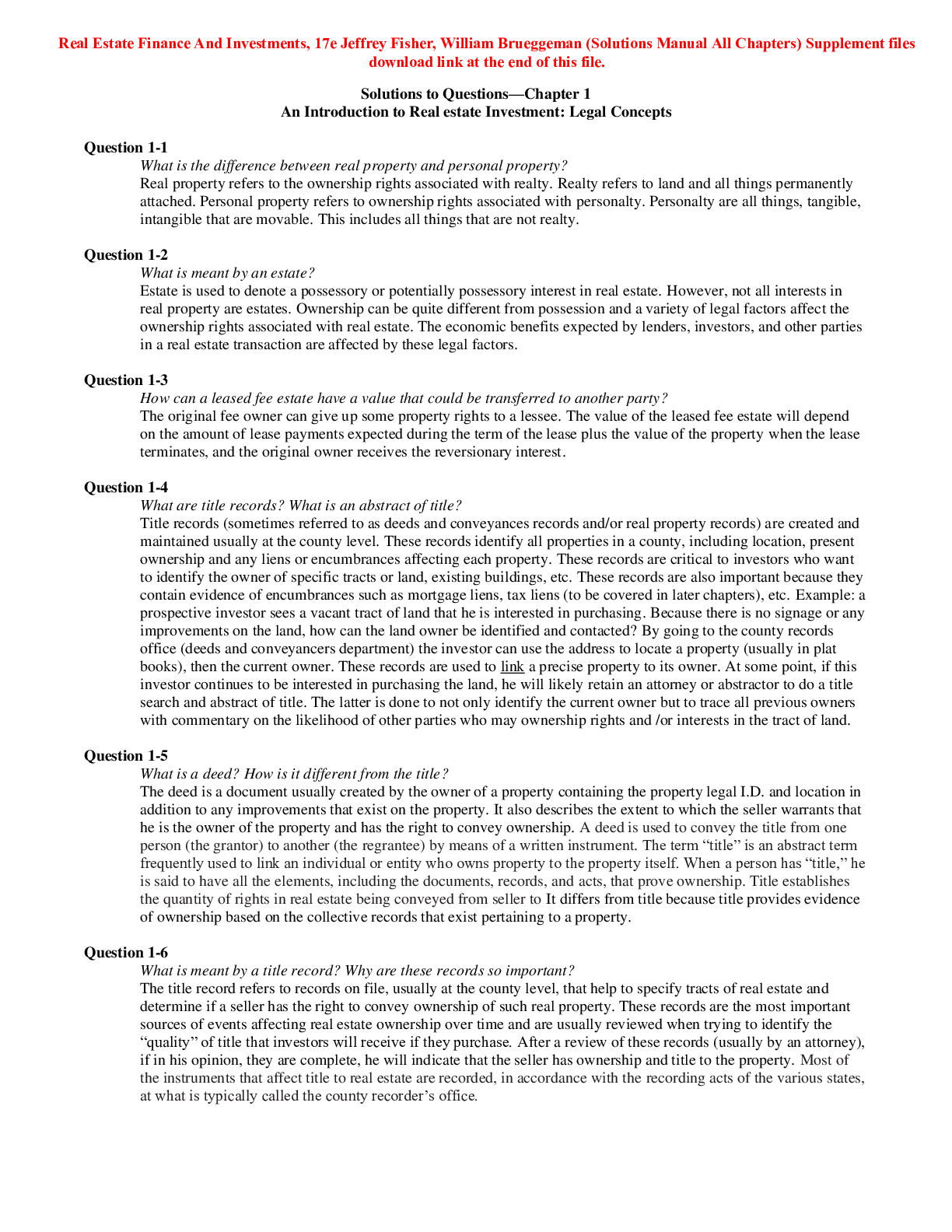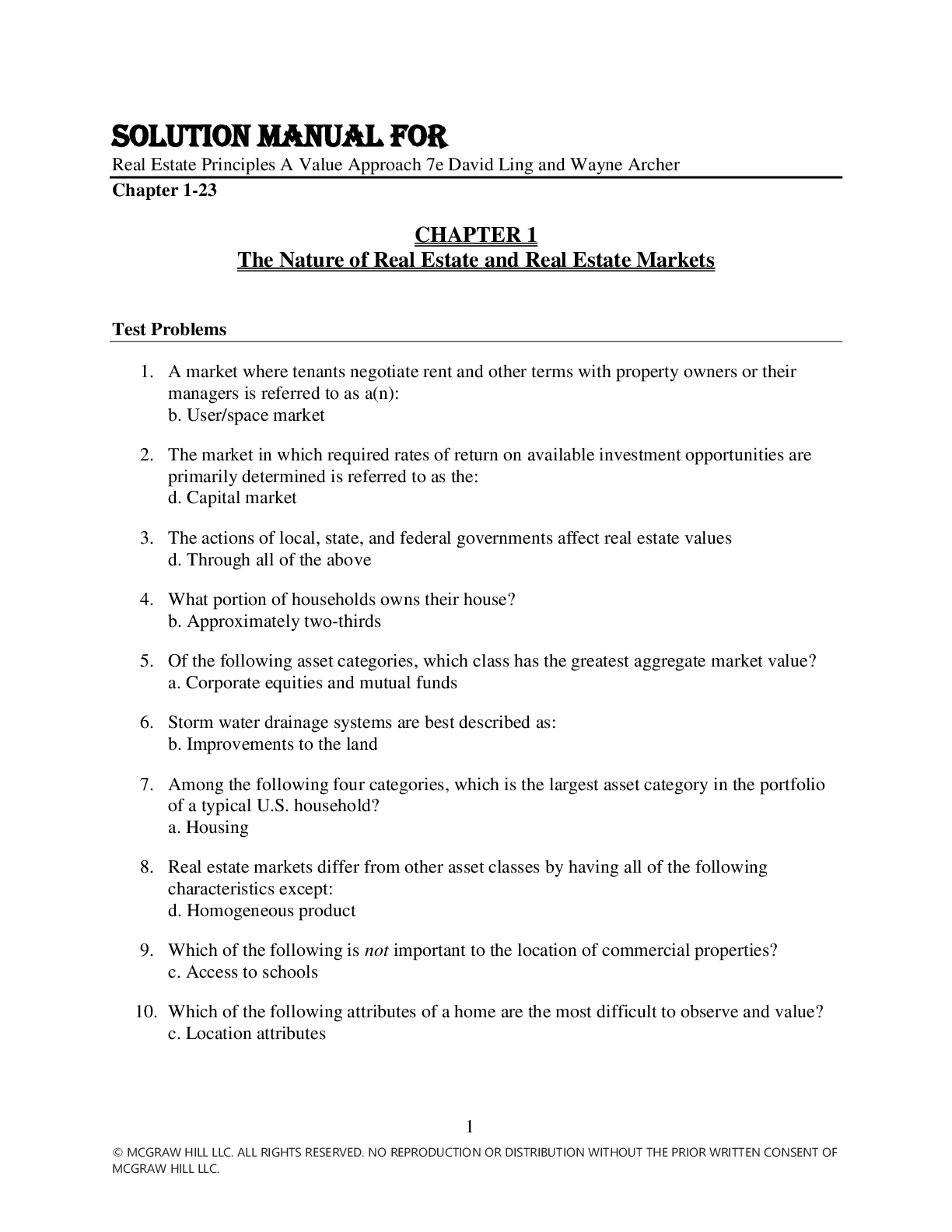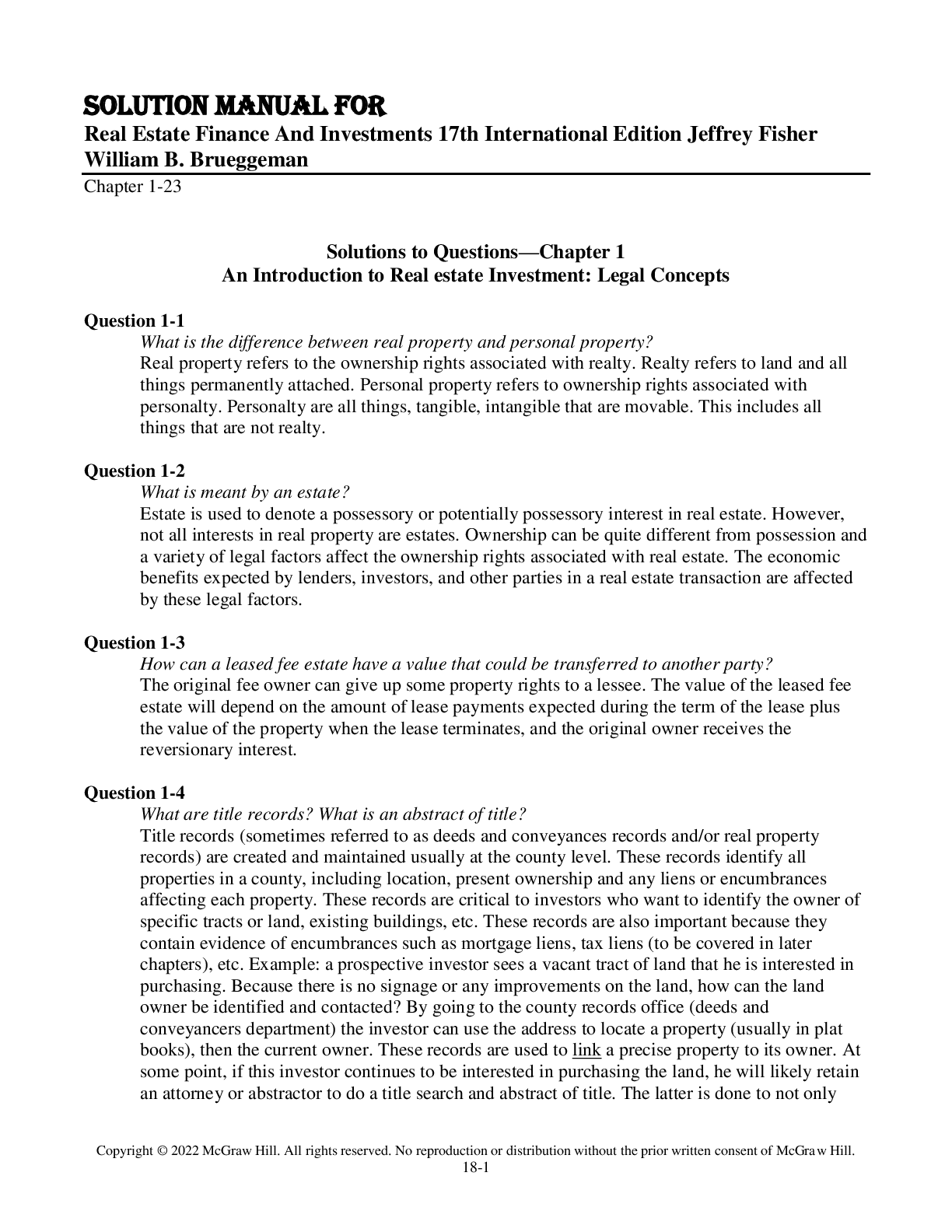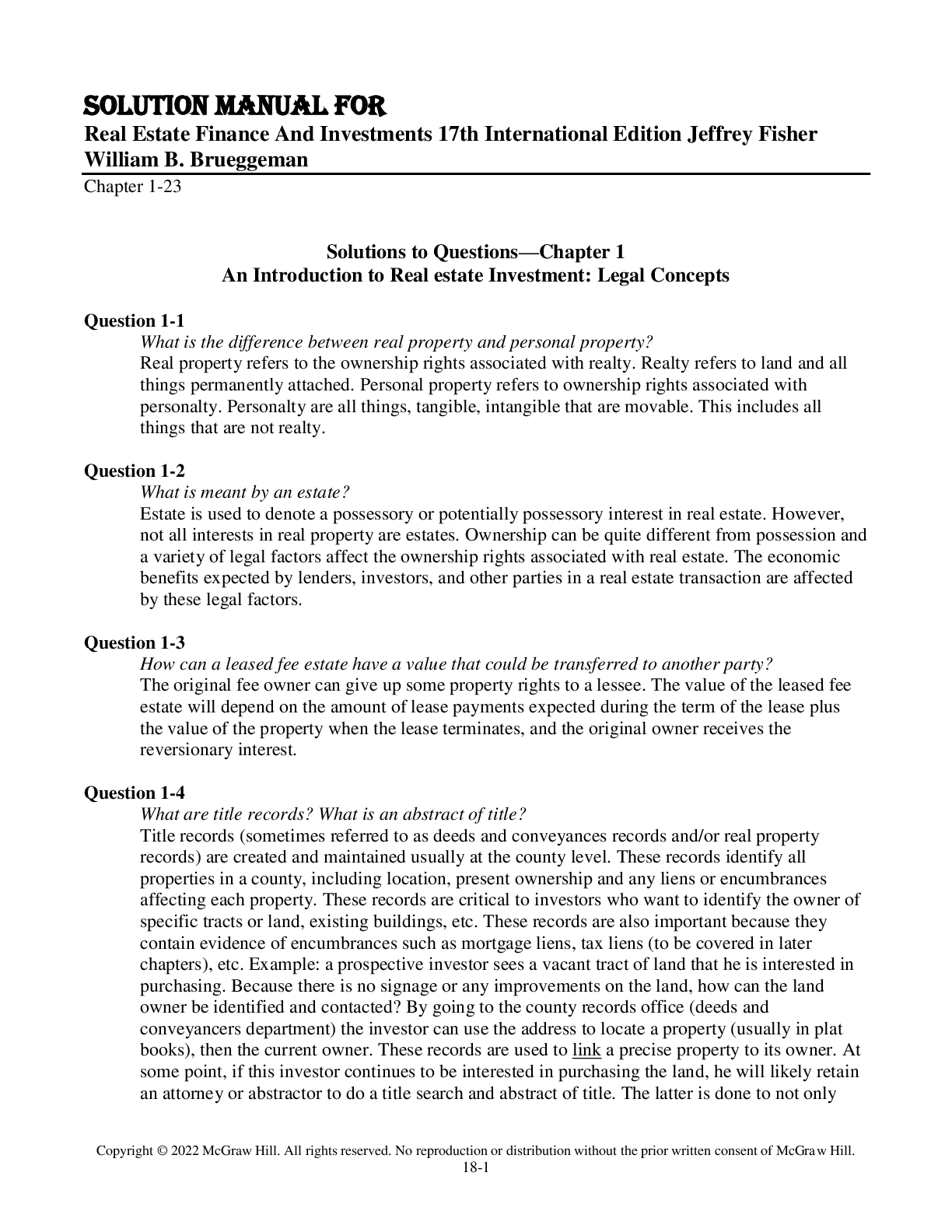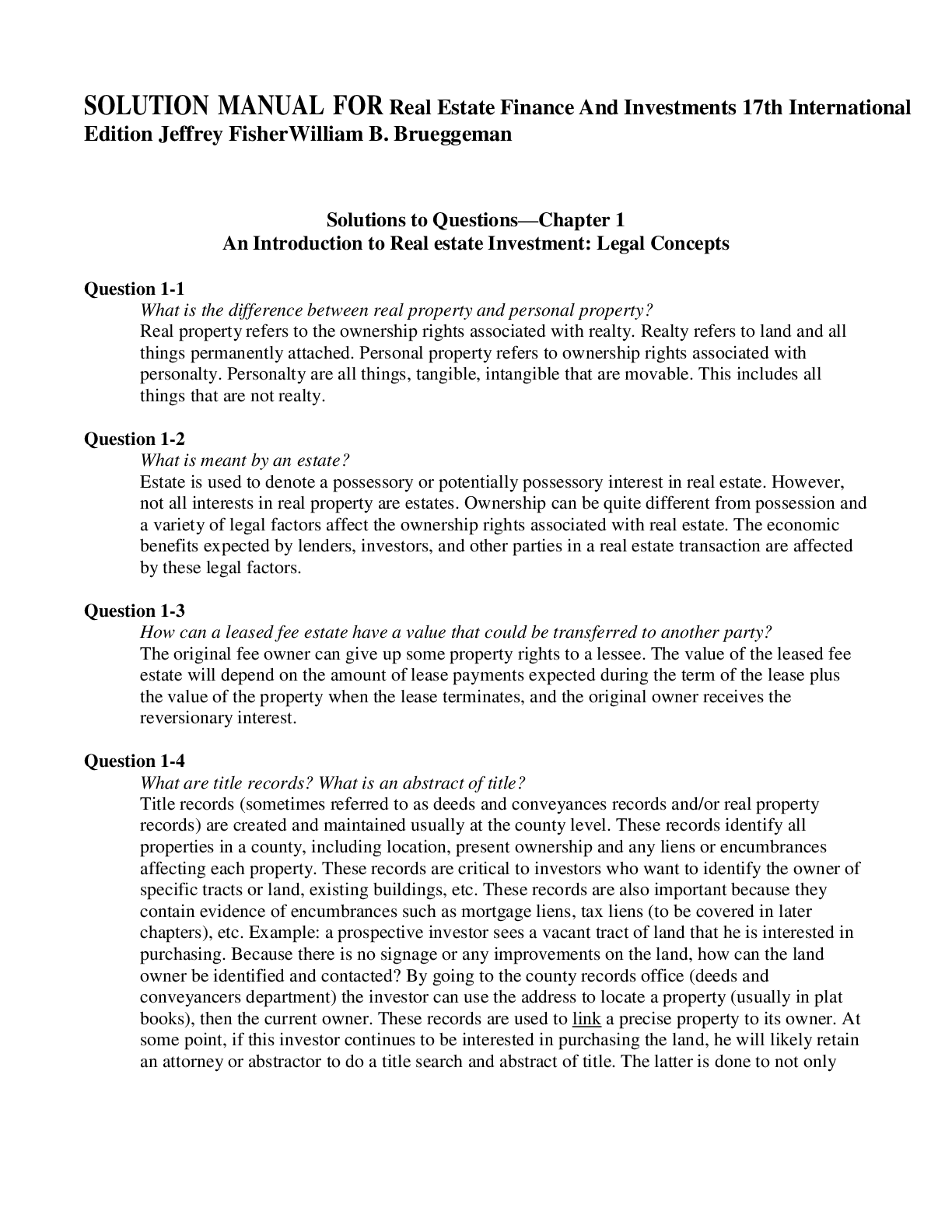Education > SOLUTIONS MANUAL > Solution Manual for Real Estate Finance And Investments 17th International Edition by Jeffrey Fisher (All)
Solution Manual for Real Estate Finance And Investments 17th International Edition by Jeffrey Fisher William B. Brueggeman
Document Content and Description Below
Solution Manual for Real Estate Finance And Investments 17th International Edition by Jeffrey Fisher William B. Brueggeman-What is the difference between real property and personal property? Real pro... perty refers to the ownership rights associated with realty. Realty refers to land and all things permanently attached. Personal property refers to ownership rights associated with personalty. Personalty are all things, tangible, intangible that are movable. This includes all things that are not realty. Question 1-2 What is meant by an estate? Estate is used to denote a possessory or potentially possessory interest in real estate. However, not all interests in real property are estates. Ownership can be quite different from possession and a variety of legal factors affect the ownership rights associated with real estate. The economic benefits expected by lenders, investors, and other parties in a real estate transaction are affected by these legal factors. Question 1-3 How can a leased fee estate have a value that could be transferred to another party? The original fee owner can give up some property rights to a lessee. The value of the leased fee estate will depend on the amount of lease payments expected during the term of the lease plus the value of the property when the lease terminates, and the original owner receives the reversionary interest. Question 1-4 What are title records? What is an abstract of title? Title records (sometimes referred to as deeds and conveyances records and/or real property records) are created and maintained usually at the county level. These records identify all properties in a county, including location, present ownership and any liens or encumbrances affecting each property. These records are critical to investors who want to identify the owner of specific tracts or land, existing buildings, etc. These records are also important because they contain evidence of encumbrances such as mortgage liens, tax liens (to be covered in later chapters), etc. Example: a prospective investor sees a vacant tract of land that he is interested in purchasing. Because there is no signage or any improvements on the land, how can the land owner be identified and contacted? By going to the county records office (deeds and conveyancers department) the investor can use the address to locate a property (usually in plat books), then the current owner. These records are used to link a precise property to its owner. At some point, if this investor continues to be interested in purchasing the land, he will likely retain an attorney or abstractor to do a title search and abstract of title. The latter is done to not only . 18-2 identify the current owner but to trace all previous owners with commentary on the likelihood of other parties who may ownership rights and /or interests in the tract of land. Question 1-5 What is a deed? How is it different from the title? The deed is a document usually created by the owner of a property containing the property legal I.D. and location in addition to any improvements that exist on the property. It also describes the extent to which the seller warrants that he is the owner of the property and has the right to convey ownership. A deed is used to convey the title from one person (the grantor) to another (the regrantee) by means of a written instrument. The term ―title‖ is an abstract term frequently used to link an individual or entity who owns property to the property itself. When a person has ―title,‖ he is said to have all the elements, including the documents, records, and acts, that prove ownership. Title establishes the quantity of rights in real estate being conveyed from seller to It differs from title because title provides evidence of ownership based on the collective records that exist pertaining to a property. Question 1-6 What is meant by a title record? Why are these records so important? The title record refers to records on file, usually at the county level, that help to specify tracts of real estate and determine if a seller has the right to convey ownership of such real property. These records are the most important sources of events affecting real estate ownership over time and are usually reviewed when trying to identify the ―quality‖ of title that investors will receive if they purchase. After a review of these records (usually by an attorney), if in his opinion, they are complete, he will indicate that the seller has ownership and title to the property. Most of the instruments that affect title to real estate are recorded, in accordance with the recording acts of the various states, at what is typically called the county recorder’s office. [Show More]
Last updated: 3 months ago
Preview 5 out of 326 pages

Loading document previews ...
Buy this document to get the full access instantly
Instant Download Access after purchase
Buy NowInstant download
We Accept:

Reviews( 0 )
$15.50
Can't find what you want? Try our AI powered Search
Document information
Connected school, study & course
About the document
Uploaded On
Apr 07, 2025
Number of pages
326
Written in
Additional information
This document has been written for:
Uploaded
Apr 07, 2025
Downloads
0
Views
17


